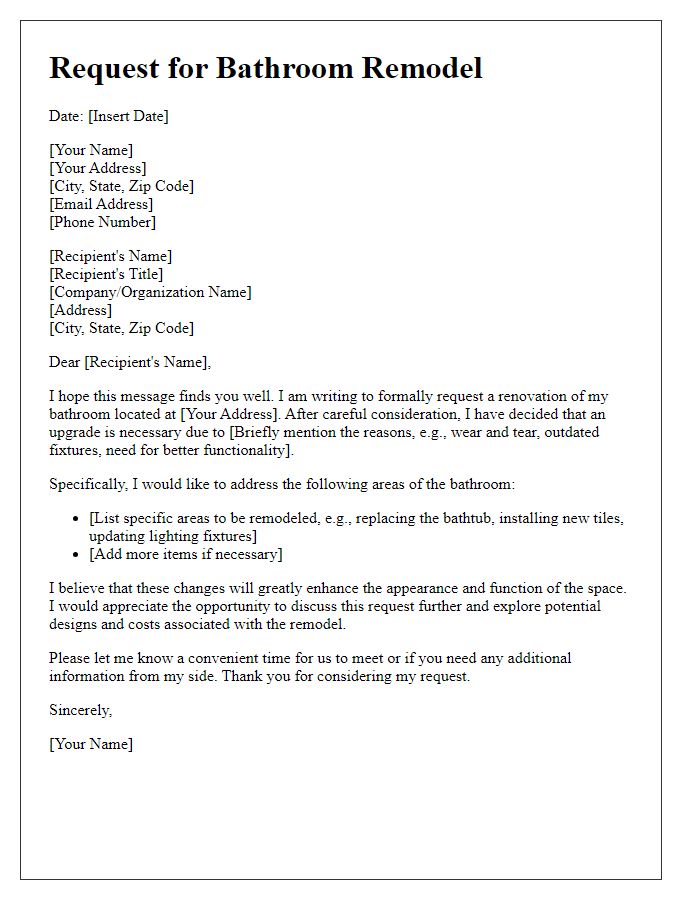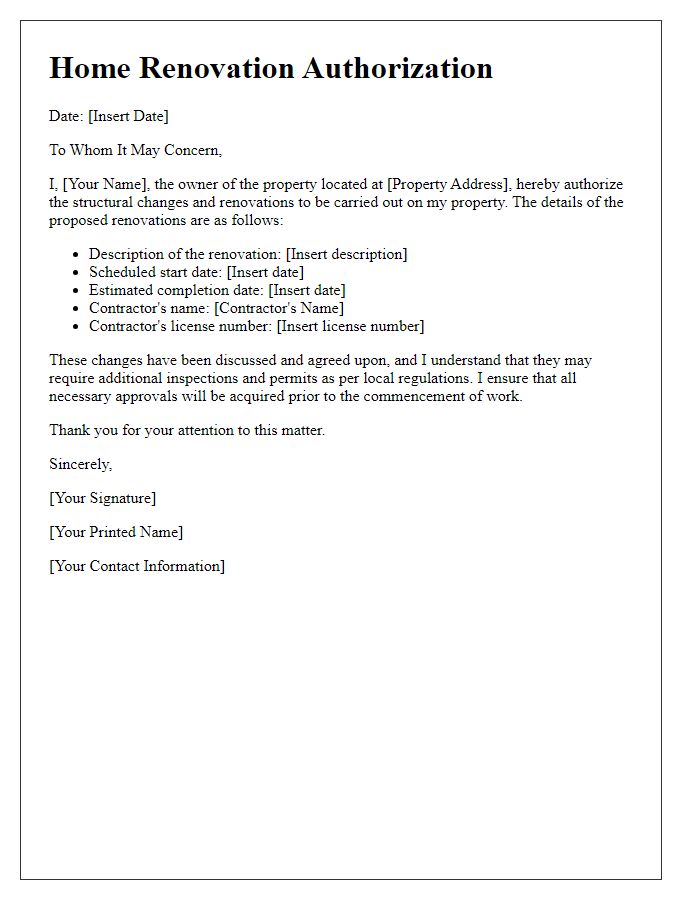Are you considering a home renovation but don't know how to formally request the changes? Writing a letter to outline your renovation needs can simplify the process and ensure your vision is clearly communicated. In this article, we'll provide you with an easy-to-follow template that covers everything from the scope of work to your budget considerations. So, let's dive in and set the stage for your dream home renovation journey!

Recipient's contact information
Home renovation projects often require thorough planning and coordination with contractors. Having the correct recipient's contact information, including full name, address, email, and phone number, is essential for ensuring accurate project communication and timelines. For instance, ensuring the contractor's name (e.g., John Smith from ABC Renovations) is noted alongside the business address (e.g., 123 Renovate Street, Renovation City) can streamline the inquiry process. Additionally, providing direct email (johnsmith@abcrenovations.com) and mobile number (555-123-4567) of the contractor facilitates timely correspondence, enabling faster progress and potential scheduling of meetings. Identifying this key information lays the groundwork for successful renovations and project management.
Purpose of renovation
Home renovation requests often arise from specific purposes, such as enhancing functionality or improving aesthetic appeal. A kitchen remodel, for instance, can increase storage by integrating custom cabinetry while upgrading appliances for energy efficiency. Expanding living spaces typically involves adding square footage through room extensions or converting attics into usable areas. Updating bathrooms often reflects a desire for modern fixtures and improved accessibility. Environmental considerations drive many homeowners to seek energy-efficient insulation, solar panels, or sustainable materials, reflecting a commitment to eco-friendly practices. Each renovation purpose not only influences design decisions but also impacts the overall value of the property, encapsulating the homeowner's vision for a more livable and functional space.
Detailed description of work required
Home renovation projects require a clear understanding of the specific tasks involved. For instance, a kitchen remodel may include installing modern appliances like stainless steel refrigerators and energy-efficient dishwashers, replacing old cabinetry with custom woodwork, and adding granite countertops. In a bathroom renovation, tasks could involve updating plumbing fixtures, replacing tiles with slip-resistant options, and installing new lighting fixtures that enhance visibility. Additionally, living room updates might feature fresh paint in soothing colors, new hardwood flooring installation, and improved window treatments like energy-efficient blinds. Creating outdoor space might entail building a wooden deck and landscaping with native plants for sustainability. Each of these tasks contributes significantly to the overall aesthetic and functionality of the home, enhancing both comfort and property value.
Budget and timeline expectations
A budget constraint of $50,000 can dictate the scope of potential home renovations, including structural changes, kitchen upgrades, or bathroom remodels. A realistic timeline of 12 to 16 weeks for project completion acknowledges necessary permits (which may take several weeks) and contractor availability (often impacted by seasonal demand). Key components of the renovation can include high-quality materials such as granite countertops, energy-efficient appliances, and durable flooring, all of which influence overall budget and time requirements. Establishing clear expectations for both budget and timeline fosters effective communication with contractors and ensures a smoother renovation process.
Contact information for response and follow-up
Home renovation projects often require meticulous planning and comprehensive communication. Homeowners must provide clear contact information, including name, email address, and phone number, to ensure timely responses and facilitate follow-ups. This information enables contractors, designers, and suppliers in the local area, such as New York City, to reach out regarding project specifics, scheduling estimates, and material selections. Maintaining open lines of communication elevates the project's success by allowing stakeholders to address concerns promptly and stay informed about progress, timelines, and budget considerations. It is crucial to document all communication for reference throughout the renovation process.
Letter Template For Home Renovation Request Samples
Letter template of home renovation suggestion for outdoor patio construction

Letter template of home renovation solicitation for eco-friendly upgrades












Comments